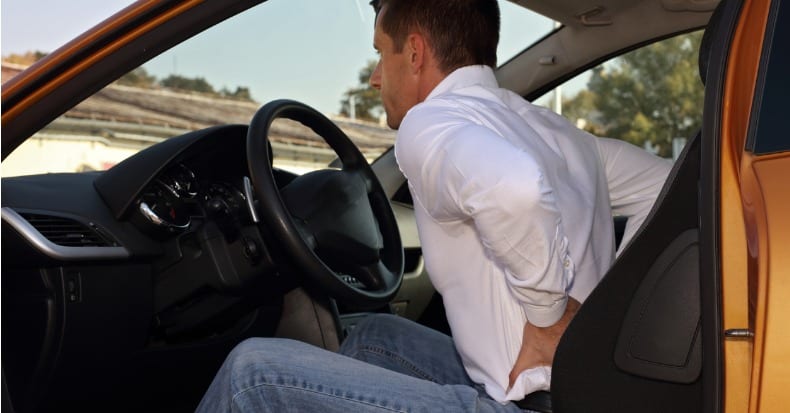When it comes to whiplash associated disorders (WAD), injury to the cervical spine is generally the focus, but what about the mid back? Can this area be injured in a whiplash event?
According to the available research, not only can the mid back become injured in an automobile accident, slip and fall, or sports collision, but it’s surprisingly common. A review of data concerning 6,481 patients who had been involved in a motor vehicle collision found that 66% reported mid-back pain (MBP) and 23% still experienced pain in this region a year later.
The mechanism of injury helps us understand how MBP may happen and why it is so common. The head weighs an average of 12 lbs (or ~5.4 kg)—similar to a bowling ball. The sudden acceleration and deceleration of the neck that occurs during whiplash can place significant strain on the soft tissues that connect the base of the skull with the mid and upper back.
A review of 38 studies that included over 50,000 WAD patients found that not only is MBP common following an automobile collision (over 60% based on the authors’ criteria), but mid-back pain intensity is higher in more severe WAD cases. Additionally, WAD patients experience heightened muscle activity in the neck and mid-back/scapular muscles, have an elevated risk for pinching the nerves that innervate the arm at both the neck and shoulder, are more likely to have myofascial pain and trigger points in the neck and mid-back muscles, and exhibit altered mid-back posture and reduced thoracic spine mobility.
Even if injury is isolated to the cervical spine, the mid back is not out of the woods. The thoracic spine can contribute to up to 33% and 21% of head-neck movement during cervical flexion and rotation, respectively. If mobility is reduced in the neck, then the thoracic spine must take on more of the load, which can increase the risk for overuse and injury.
Proper management of WAD requires treating the whole person and not restricting focus to just one area of the body, such as the neck. Doctors of chiropractic are trained to take this approach when evaluating a patient. Once a thorough examination has been completed, care often involves a multimodal approach that combines spinal manipulation, mobilization, and other manual therapies, along with specific exercises and nutritional recommendations to support the healing process.








